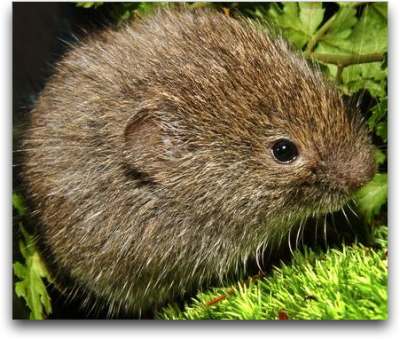The notion that lemmings had
suicidal tendencies was widely publicized in the Walt Disney
documentary "White Wilderness". The following is an
interesting essay, by
David McMillan, refuting the claims made in the film.

Early European
settlers of Australia destroyed vast tracts of millennia-old
rainforest in order to plant their English roses. They
rationalised these actions, those who felt any compunctions at
all, by referring to and decrying the native bush as ‘scrub’.
What a difference language makes to the world we inhabit! So
much easier to think you’re clearing some nuisance scrub in the
spirit of pioneering than to realise you’re cutting a living
chain uniquely evolved from the magisterial forests of aeons
ago. That would constitute a monumental tragedy! But clearing a
bit of scrub – good work! Have a beer!
Another
ecological lie which is embedded in our language relates to the
lemming. The very word ‘lemming’ has come to refer to an
unthinking conformity which leads inexorably to
self-destruction. This meaning is even ensconced in the Oxford
English Dictionary, which sets forth the common usage of
‘lemming-like’ as ‘headlong, suicidal, unthinking.’
The amazing fact
is that the only evidence which supports this commonly held
misconception was fabricated by the makers of an Academy
Award-winning Walt Disney nature documentary. An excerpt from
this film, along with some extraordinarily stupid interview
subjects, can be viewed here:
http://www.youtube.com/watch?v=pDqlZjpSJCc
There are four
different types of lemming; they are furry little rodents (can
be about 10 cm long) and are found in the cooler northern parts
of Eurasia and North America. As with other rodents, populations
of lemmings go through mysterious boom and bust cycles. The
fluctuations in lemming populations are more regular than for
other rodents: every three or four years, lemming populations
peak dramatically and then drop back to almost zero. No-one
knows why. There are quite a few educated guesses involving food
availability, predators, migration, diseases, climate and other
environmental variables, and yet it bears repeating, because it
is the fear of this sentiment which causes scientists to cook up
the odd hypothesis or two: No-one knows why.
One such odd
hypothesis, possibly originating in the 1930s at the Bureau of
Animal Population, Oxford University, in merry old England, was
that natural population control in the form of a sudden
population crash was effected by mass-suicide.
Walt Disney’s
White Wilderness (1958) was filmed in Alberta, Canada, by
nine different cinematographers. The photographer in charge of
the lemming sequence was James R. Simon. It seems the
film-makers believed the group suicide theory; perhaps from this
we can infer it was the accepted scientific ‘truth’ at the time.
Since lemmings are not even native to Alberta, Canada, the
film-makers purchased a number of pet lemmings from Inuit
children, transported them to Alberta and then staged a scene
where the lemmings appear to throw themselves into the sea. In
fact, and this is now acknowledged by the Walt Disney company,
it was the Disney film crew who threw these helpless creatures
off a cliff into a river, and used camera angles and editing to
create a misleading impression which resonates to this day.
The film won the
1959 Oscar for Best Documentary, beginning its long life of
disinformation. The scientific theory it was based on quietly
went out of fashion, and no doubt because the Pied Piper-ish ‘if
everyone else jumped off a cliff would you?’ metaphor proved so
apt for the human species, ‘lemming-like’ behaviour passed into
the language and became a seemingly immovable prop within
popular culture. All of this is very worrying indeed. Some
scientists lay down the law, Walt Disney creates a memorable if
faked movie (for which animals were murdered and at the same
time slanderously implicated in their own deaths) and that is
all that is needed for a false concept to become rooted in our
collective culture, because it seems easier to unthinkingly
accept an inherited falsehood than to really get to know other
animals on their own terms.
-David McMillan
Click
here to read more on the lemming suicide controversy at Snopes